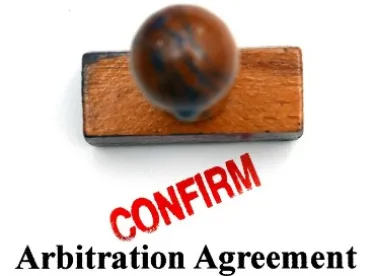The Seventh Circuit recently held that district courts should not send court-authorized notice of pending FLSA collective actions to employees who are party to a mandatory arbitration agreement.
In Bigger v. Facebook, Inc., the plaintiff-employee brought an FLSA collective action, alleging that she and a group of “similarly situated” employees were misclassified as exempt employees. When the plaintiff-employee moved to conditionally certify the FLSA collective action and to send court-authorized notice of the action, the defendant-employer argued that notice was improper and inefficient because most putative members were bound by mandatory arbitration agreements that prohibited their participation in the case. Despite being presented with a copy of the arbitration agreement, the district court granted conditional certification and ordered the parties to issue notice to all putative collective members, including those that had signed arbitration agreements. The Seventh Circuit granted an interlocutory appeal.
On appeal, the Seventh Circuit reversed the district court, holding that “a court may not authorize notice to individuals whom the court has been shown entered mutual arbitration agreements waiving their right to join the action” and expressly held that the district court “must give the [employer] an opportunity to make that showing” at the conditional certification stage before notice is issued.
In doing so, the Seventh Circuit rejected the plaintiff-employee’s argument that the district court should wait until the decertification stage—which typically occurs after discovery—to determine which employees, if any, are covered by binding arbitration agreements.
In rejecting this wait-and-see approach, the Seventh Circuit warned that sending notice to employees that were prohibited from joining the action could lead plaintiffs to abuse the collective-action device to leverage higher settlement amounts, noting that “expanding the litigation with additional plaintiffs increases pressure to settle, no matter the action’s merits.” The Seventh Circuit’s decision also highlighted the potential “danger” of turning the notice process into court-sanctioned solicitation of claims—particularly for those employees that were prohibited from joining the action.
The Seventh Circuit set forth an analytic framework to address the two most likely factual scenarios. First, if the parties do not dispute that certain putative members are bound by valid arbitration agreements, then the district court should not authorize notice to those individuals. Second, if there is a dispute between the parties as to whether certain putative members were party to a valid arbitration agreement, the district court must allow both parties to submit evidence before authorizing notice. The Seventh Circuit made clear that the employer has the burden to prove the existence of a valid and binding arbitration agreement for each individual employee that it seeks to exclude from receiving notice.
The Seventh Circuit’s decision leaves some open questions, including the type and amount of evidence the employer must submit in order to prove that certain employees should not receive notice. For example, it remains unclear if the employer must submit each putative collective member’s arbitration agreement and/or reveal their identities to plaintiff’s counsel—which could lead to hundreds of individualized issues (depending on the size of the potential collective action) and/or increase the risk of solicitation of claims by plaintiffs’ counsel that the Seventh Circuit was trying to avoid.
Moreover, the Seventh Circuit did not address the far more important question of whether the case should have been conditionally certified at all since the employees are not “similarly situated” to one another given the fact that some employees are subject to arbitration agreements and others are not—an issue that continues to divide the district courts. Compare Errickson v. Paychex, Inc., 6:19-CV-06347, 2020 WL 1307682 (W.D.N.Y. Mar. 19, 2020) (“[T]hose who executed [the] Arbitration Agreements are not similarly situated to those who did not.”) with Williams v. Omainsky, 15-0123-WS-N, 2016 WL 297718 (S.D. Ala. Jan. 21, 2016) (noting that the “execution of arbitration agreements by certain prospective opt-in plaintiffs does not deprive them of ‘similarly situated’ status vis a vis named plaintiffs who did not sign such agreements”).
In short, this area of the law will continue to develop as more employers institute employment arbitration agreements and as more courts grapple with the issue. Ultimately, the potential benefit to employers, if any, will depend on how future court decisions address these open questions and the level of evidence that courts ultimately require employers to present in order to avoid sending notice to employees with arbitration agreements.





 />i
/>i

